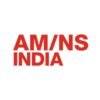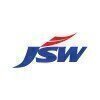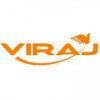Filter interviews by
Jindal Stainless Interview Questions and Answers
156 Interview questions
Annealing steel is a heat treatment process that alters its physical and sometimes chemical properties to improve ductility and reduce hardness.
Heating: Steel is heated to a specific temperature, typically between 550°C and 700°C, depending on the type of steel.
Soaking: The steel is held at this temperature for a period to allow for uniform heat distribution.
Cooling: The steel is then slowly cooled, often in a fur...
A Buchholz relay is a safety device used in transformers to detect faults and prevent damage.
It is installed in the oil-filled transformers to monitor gas accumulation.
The relay operates on the principle of gas detection; gas is generated during faults.
When gas accumulates, it triggers the relay to operate, indicating a fault.
It can detect both slow and fast faults, providing early warning.
Example: If a transforme...
A transformer operates on electromagnetic induction to transfer electrical energy between circuits at different voltage levels.
Consists of primary and secondary coils wound around a magnetic core.
Works on the principle of Faraday's law of electromagnetic induction.
When alternating current flows through the primary coil, it creates a magnetic field.
This magnetic field induces a voltage in the secondary coil.
Used in...
Steel making is a complex process involving the transformation of iron ore into steel through various methods and technologies.
Basic Oxygen Steelmaking: This method involves blowing oxygen through molten iron to reduce carbon content, producing high-quality steel.
Electric Arc Furnace: Utilizes electric arcs to melt scrap steel, allowing for recycling and producing steel with lower emissions.
Blast Furnace: Iron ore...
SAP material code is a unique identifier for materials in SAP systems, facilitating inventory and procurement management.
Unique Identifier: Each material code is distinct, allowing for precise tracking of inventory items.
Structure: Typically consists of alphanumeric characters, e.g., 'MAT12345'.
Material Master: Codes are part of the material master data, which includes details like description, unit of measure, an...
VIM Process stands for Value Innovation Management, focusing on creating value through innovation in business strategies.
Focuses on aligning innovation with customer value.
Encourages cross-functional collaboration to enhance creativity.
Utilizes tools like Value Proposition Canvas to identify customer needs.
Example: A tech company using VIM to develop user-friendly software that addresses specific pain points.
A third-angle projection drawing of a bottle shows its front, top, and side views for accurate representation.
Third-angle projection places the object in the first quadrant.
Front view shows the bottle's height and width.
Top view illustrates the bottle's opening and cap design.
Side view reveals the bottle's depth and curvature.
First angle projection places the object between the observer and the projection plane, while third angle does the opposite.
In first angle projection, the object is placed in the first quadrant, and views are projected onto the plane behind the object.
In third angle projection, the object is placed in the third quadrant, and views are projected onto the plane in front of the object.
First angle projection is common...
Coupling refers to the interaction between components in a system, influencing their dependency and communication.
Tight Coupling: Components are highly dependent on each other. Example: A class that directly uses another class's methods.
Loose Coupling: Components are independent, reducing the impact of changes. Example: Using interfaces or APIs for communication.
Data Coupling: Components share data through paramet...
I have over 10 years of experience in both inbound and outbound logistics, optimizing supply chains and enhancing operational efficiency.
Managed inbound logistics for a major retail chain, reducing lead times by 20%.
Implemented an outbound logistics strategy that improved delivery accuracy to 98%.
Coordinated with suppliers to streamline inbound shipments, resulting in a 15% cost reduction.
Led a team that optimized...
Jindal Stainless Interview Experiences
240 interviews found
(2 Questions)
- Q1. What is stainless steel, and what are its properties and applications?
- Ans.
Stainless steel is a corrosion-resistant alloy with high strength and durability, commonly used in various industries.
Stainless steel is a type of steel alloy containing a minimum of 10.5% chromium, which creates a passive oxide layer that prevents corrosion.
It has high strength, excellent durability, and resistance to corrosion, making it ideal for applications in harsh environments.
Stainless steel is commonly used in...
- Q2. What are the testing methods for stainless steel?
- Ans.
Various testing methods for stainless steel include visual inspection, dye penetrant testing, magnetic particle testing, ultrasonic testing, radiographic testing, and hardness testing.
Visual inspection is the simplest method to check for surface defects or inconsistencies.
Dye penetrant testing involves applying a colored dye to the surface and then using a developer to detect any cracks or defects.
Magnetic particle tes...
(2 Questions)
- Q1. What is your current salery
- Ans.
I am currently earning $70,000 per year.
My current salary is $70,000 per year.
I am satisfied with my current salary.
I have been receiving annual increments in my salary.
I believe my salary is competitive in the industry.
- Q2. What is your expected salary?
- Ans.
My expected salary is competitive and aligned with industry standards for an experienced Inspection Engineer.
I have researched the average salary range for Inspection Engineers in this region
I have considered my level of experience and qualifications
I am open to negotiation based on the overall compensation package offered
Interview Preparation Tips
Environmental Health and Safety Executive Interview Questions & Answers
posted on 14 Feb 2025
I appeared for an interview in Jan 2025.
(2 Questions)
- Q1. What are the environmental compliance requirements for the iron and steel industry?
- Ans.
Environmental compliance requirements for the iron and steel industry involve air and water quality regulations, waste management, and pollution prevention measures.
Compliance with air quality regulations such as emissions limits for particulate matter, sulfur dioxide, and nitrogen oxides
Adherence to water quality standards for discharge of pollutants into water bodies
Implementation of waste management practices to pro...
- Q2. What are the standards for ambient air quality and emissions monitoring in the iron and steel industry?
- Ans.
Ambient air quality and emissions monitoring standards in the iron and steel industry.
Ambient air quality standards are set by regulatory bodies to protect public health and the environment.
Emissions monitoring involves measuring pollutants released into the air from iron and steel production processes.
Common pollutants monitored in the iron and steel industry include particulate matter, sulfur dioxide, nitrogen oxides...
Interview Preparation Tips
I applied via Walk-in and was interviewed before Sep 2021. There was 1 interview round.
(3 Questions)
- Q1. What your name and introduction your self.
- Ans.
My name is John and I am a dedicated and experienced Desktop Support Engineer with a passion for solving technical issues.
My name is John.
I have experience as a Desktop Support Engineer.
I am dedicated and passionate about solving technical issues.
- Q2. What is the difference between workgroup or domain.
- Ans.
Workgroup is a peer-to-peer network where each computer has its own security settings, while a domain is a centralized network managed by a server.
Workgroup is decentralized, each computer has its own security settings
Domain is centralized, managed by a server
In a workgroup, users have to manage their own accounts on each computer
In a domain, users have a single account that can be used to access resources across the n...
- Q3. What is daily base activity.
- Ans.
Daily base activities for a Desktop Support Engineer involve troubleshooting technical issues, installing software/hardware, and providing user support.
Troubleshooting technical issues with hardware and software
Installing and configuring software and hardware
Providing technical support to end users
Maintaining and updating documentation of IT systems
Monitoring and responding to IT tickets and requests
I applied via Campus Placement and was interviewed in Oct 2024. There were 3 interview rounds.
Aptitude and Core Related ( Mine was metallurgy )
10 students in a group, 30 minutes duration, unstructured, topic was " pros and cons of WFH"
(2 Questions)
- Q1. HR QUES -- INTRODUCE YOURSELF, YOUR DREAMS/GOALS, YOUR FAMILY, SPECIAL THING ABOUT YOUR HOMETOWN, INTERESTING KEYPOINTS FROM RESUME, SOCIETIES AND POSITION OF RESPONSIBILITIES.
- Q2. TECH QUESTIONS -- TYPES OF DISLOCATIONS, FE-C DIAGRAM, ELLINGHAM DIAGRAM, GIBBS FREE ENERGY, LATENT HEAT, DIFFERENT CRYSTAL STRUCTURES, SLIP PLANES, STEEL MAKING (AOD PROCESS), LE - CHATLIER'S PRINCIPLE, H...
Interview Preparation Tips
- Physical metallurgy
- Steel Making
- Heat Treatment
- Thermodynamics
--SHOW GENUINE INTEREST IN JOINING THE ORGANISATION, DON'T MENTION HIGHER STUDY PLANS EVEN IF YOU HAVE ONE.
--LOOK INTO THE EYES AND TALK.
I applied via Company Website and was interviewed in Jun 2024. There were 3 interview rounds.
(2 Questions)
- Q1. Diploma Mechanical engineering JE
- Ans.
A Diploma in Mechanical Engineering can prepare students for a career as a Junior Engineer (JE) in the public or private sector:
- Q2. Diploma mechanical engineering supervisor
- Ans.
A three-year course that provides students with the knowledge and skills to design, manufacture, install, and operate engines and machines. Students learn about forces and motion, and subjects include automobile engineering, manufacturing engineering, and power plant engineering.
(2 Questions)
- Q1. Diploma mechanical engineering JE
- Ans.
A Diploma in Mechanical Engineering can prepare students for a career as a Junior Engineer (JE) in the public or private sector:
- Q2. Diploma Mechanical engineering supervisor
(2 Questions)
- Q1. Assistant manager
- Q2. Assistant incharge
Interview Preparation Tips
Set goals
Define your career goals, including your ideal role, industry, and long-term objectives.
Tailor your resume
For each job application, customize your resume to highlight relevant skills and experiences.
Learn new skills
Identify any skill gaps and take steps to improve them. Online courses, certifications, or workshops can help you stay competitive.
Understand your strengths
Understanding your professional strengths can help you sell yourself as the best candidate for the job.
Ask for informational interviews
Reaching out to companies for informational interviews can help you show your interest and learn more about their organization.
Be patient
The interview process can take longer than it used to, and it can take a while to hear back after an interview.
Use a resume summary
If you have a diverse or extensive work history, a resume summary can help employers see how your past experiences are relevant to the job.
Learn from others
Learn from the experiences of fellow job seekers who have successfully navigated the job market.
I applied via Campus Placement
1 Hour Test Domain Knowledge test related to Heat Transfer , Manufacturing Processes and Thermodynamics.
(2 Questions)
- Q1. Explain MIG and TIG welding .
- Ans.
MIG and TIG welding are two common types of welding processes used in metal fabrication.
MIG welding stands for Metal Inert Gas welding, uses a wire electrode and shielding gas to join metal pieces together.
TIG welding stands for Tungsten Inert Gas welding, uses a tungsten electrode and inert gas to create a weld.
MIG welding is faster and easier to learn compared to TIG welding.
TIG welding produces higher quality and mo...
- Q2. Cutting Speeds and Unconventional machining
I applied via AmbitionBox and was interviewed in Aug 2024. There were 6 interview rounds.
(2 Questions)
- Q1. What is your branch
- Ans.
I am a Safety Officer in the Health and Safety branch.
Specialize in creating and implementing safety procedures and protocols
Conduct regular safety inspections and audits
Provide safety training to employees
Investigate accidents and incidents to determine root causes
Ensure compliance with safety regulations and standards
- Q2. Your %last semester
- Ans.
My last semester GPA was 3.8, showing consistent academic performance.
Achieved a GPA of 3.8 in the last semester
Demonstrated consistent academic performance
Received positive feedback from professors
Salary work and company details.
Your company aur very good
(2 Questions)
- Q1. No experience without working
- Q2. Please giving me office work
(2 Questions)
- Q1. Company work very hard Ya easy
- Q2. Giving my pakes
(2 Questions)
- Q1. What is your name
- Ans.
My name is John Smith.
My name is John Smith.
I go by the name John.
My full name is John Smith.
- Q2. What is your fmaily background
- Ans.
I come from a close-knit family with a strong emphasis on education and hard work.
Family values education and hard work
Close-knit family
Strong emphasis on family bonds
Interview Preparation Tips
I appeared for an interview in Mar 2025, where I was asked the following questions.
- Q1. Motor, plc, vfd, mcb, Breaker
- Q2. Motor maintenance and panel maintenance
- Q3. Transformer maintenance and inspection
- Q4. Maintain log sheet and check list
- Ans.
Maintaining log sheets and checklists ensures systematic tracking of maintenance tasks and equipment status.
Log sheets should include date, time, technician name, and tasks performed.
Checklists help ensure all maintenance tasks are completed, e.g., safety checks on equipment.
Regularly update log sheets to reflect any changes or issues encountered during maintenance.
Use checklists for routine inspections, such as verify...
- Q5. Ecr inispection and maintain check list
- Q6. Power wiring and control wiring and installation
- Q7. Godown wiring and staircase wiring
- Q8. CT and PT, OLR, Contacter installation
- Q9. Cable gland and termination
- Q10. Breaker Racking and Rackout
- Q11. Maintain check list
Interview Preparation Tips

(4 Questions)
- Q1. What is the transfermor
- Ans.
A transformer is a device that transfers electrical energy between two or more circuits through electromagnetic induction.
Transformers are used to increase or decrease voltage levels in electrical circuits.
They consist of two coils of wire, known as the primary and secondary coils, wrapped around a core.
The primary coil is connected to the input voltage source, while the secondary coil is connected to the output load.
T...
- Q2. What is the encorder
- Ans.
An encoder is a device or software program that converts data from one format to another.
An encoder can be used to convert analog signals to digital signals or vice versa.
Encoders are commonly used in robotics, industrial automation, and digital communication systems.
Examples of encoders include optical encoders, magnetic encoders, and rotary encoders.
- Q3. What is the motor
- Ans.
A motor is a device that converts electrical energy into mechanical energy to produce motion.
Motors can be found in various applications such as industrial machinery, household appliances, and vehicles.
There are different types of motors including AC motors, DC motors, and servo motors.
Motors work by creating a magnetic field that interacts with current-carrying conductors to generate force and motion.
- Q4. What is the AC vvfd
- Ans.
AC VVFD stands for Alternating Current Variable Voltage Variable Frequency Drive.
AC VVFD is a type of motor controller that varies the voltage and frequency of the electrical supply to control the speed of an AC motor.
It is commonly used in industrial applications to regulate the speed of pumps, fans, conveyors, and other equipment.
AC VVFDs can improve energy efficiency, reduce wear and tear on equipment, and provide p...
Junior Electrical Maintenance Engineer Interview Questions & Answers
posted on 11 Apr 2025
I appeared for an interview in May 2025, where I was asked the following questions.
- Q1. Electrical engineering questions put
- Q2. PLC, electrical panel ,hydraulic machine Asu, hot oven, temperature maintain
Top trending discussions






Jindal Stainless Interview FAQs
Some of the top questions asked at the Jindal Stainless interview -
The duration of Jindal Stainless interview process can vary, but typically it takes about less than 2 weeks to complete.
Tell us how to improve this page.
Jindal Stainless Interviews By Designations
- Jindal Stainless Junior Engineer Interview Questions
- Jindal Stainless Associate Manager Interview Questions
- Jindal Stainless Assistant Engineer Interview Questions
- Jindal Stainless Executive Engineer Interview Questions
- Jindal Stainless Graduate Engineer Trainee (Get) Interview Questions
- Jindal Stainless Manager Interview Questions
- Jindal Stainless Technician Interview Questions
- Jindal Stainless Diploma Trainee Engineer Interview Questions
- Show more
Interview Questions for Popular Designations
- Junior Engineer Interview Questions
- Associate Manager Interview Questions
- Assistant Engineer Interview Questions
- Executive Engineer Interview Questions
- Graduate Engineer Trainee (Get) Interview Questions
- Manager Interview Questions
- Diploma Trainee Engineer Interview Questions
- Technician Interview Questions
- Show more
Overall Interview Experience Rating
based on 313 interview experiences
Difficulty level
Duration
Interview Questions from Similar Companies
Jindal Stainless Reviews and Ratings
based on 2.5k reviews
Rating in categories
|
Associate Manager
1.2k
salaries
| ₹5.3 L/yr - ₹15.5 L/yr |
|
Junior Engineer
1.2k
salaries
| ₹2.2 L/yr - ₹5.9 L/yr |
|
Executive Engineer
725
salaries
| ₹4 L/yr - ₹11 L/yr |
|
Assistant Engineer
710
salaries
| ₹3.2 L/yr - ₹7.8 L/yr |
|
Manager
417
salaries
| ₹7.2 L/yr - ₹23.5 L/yr |

Tata Steel

JSW Steel

Jindal Steel and Power

ArcelorMittal Nippon Steel
- Home >
- Interviews >
- Jindal Stainless Interview Questions













